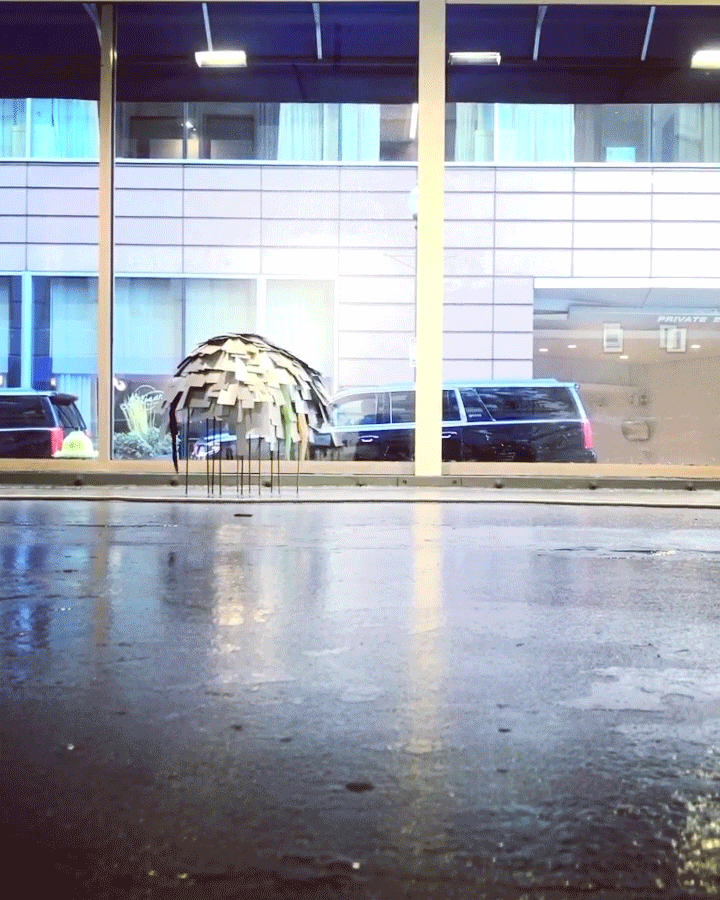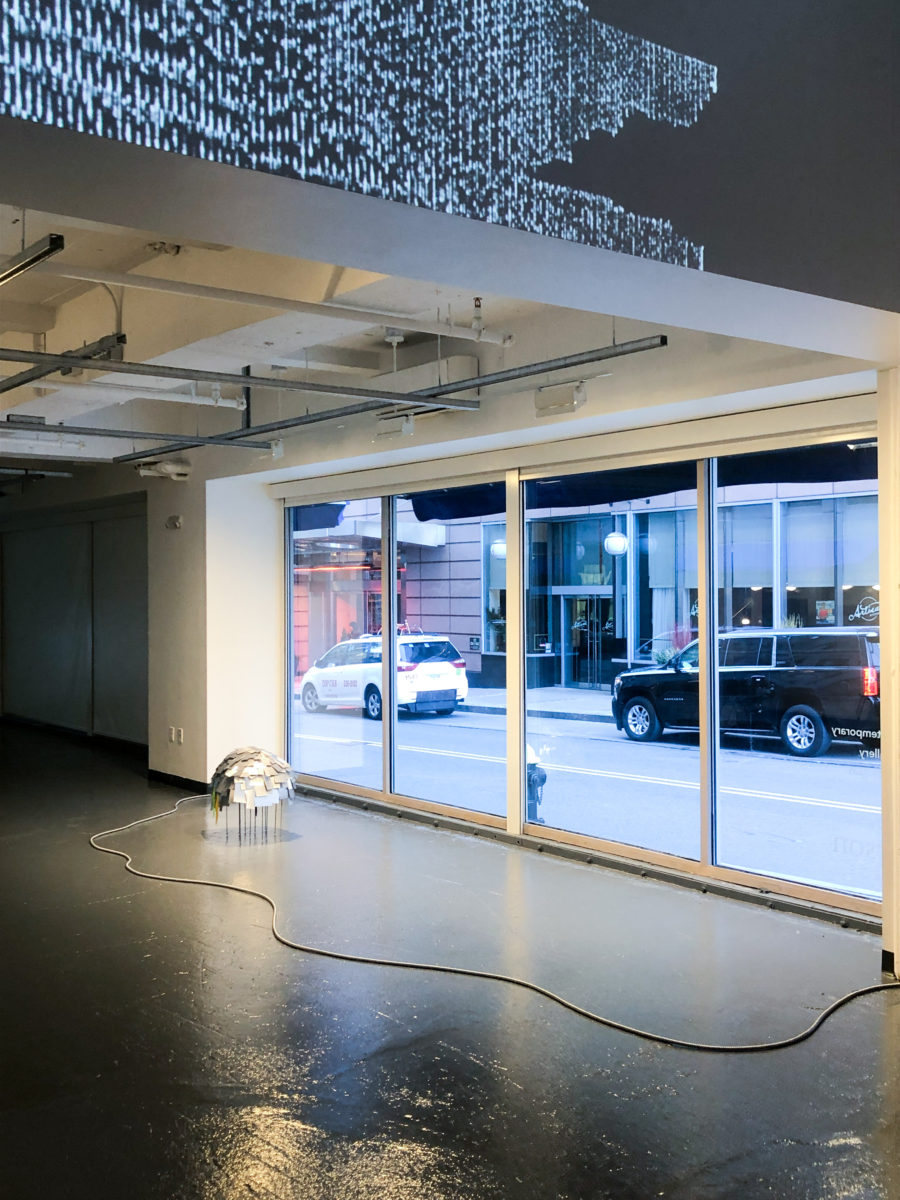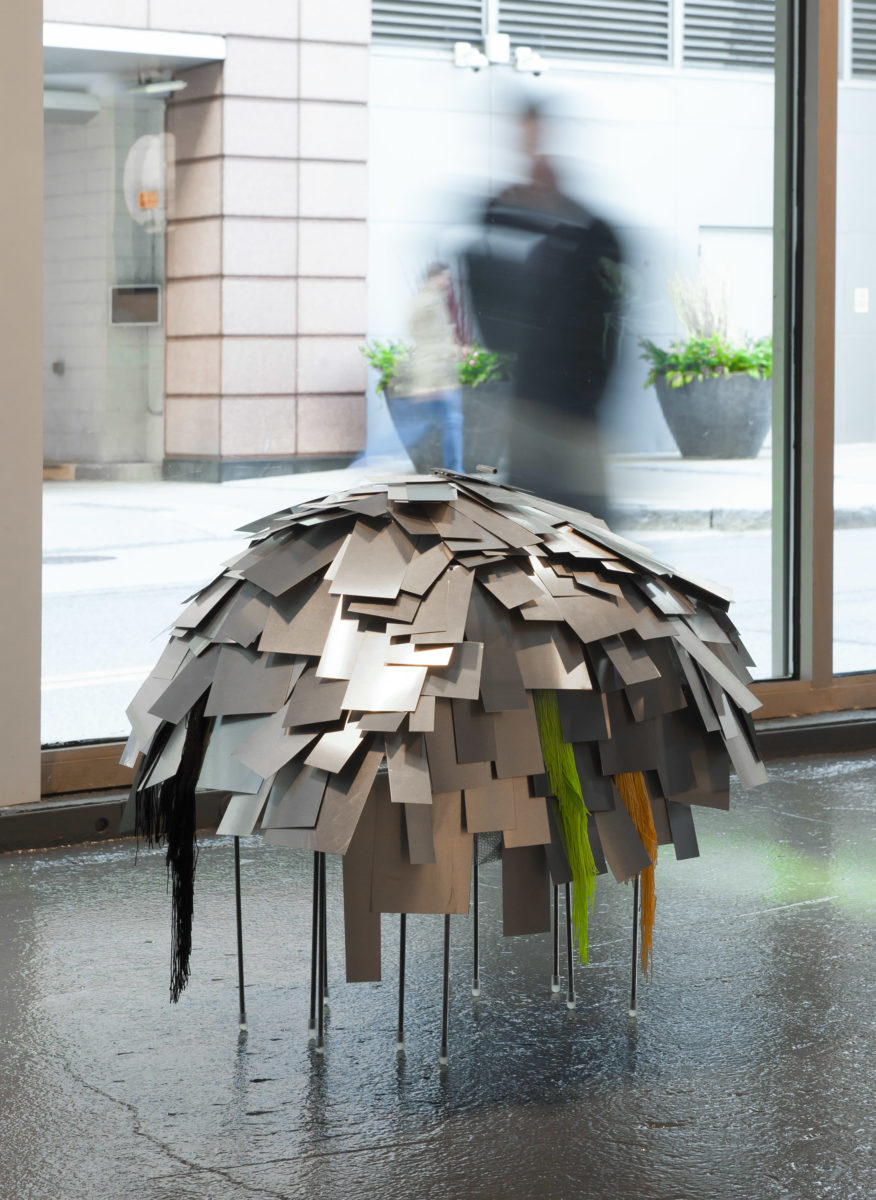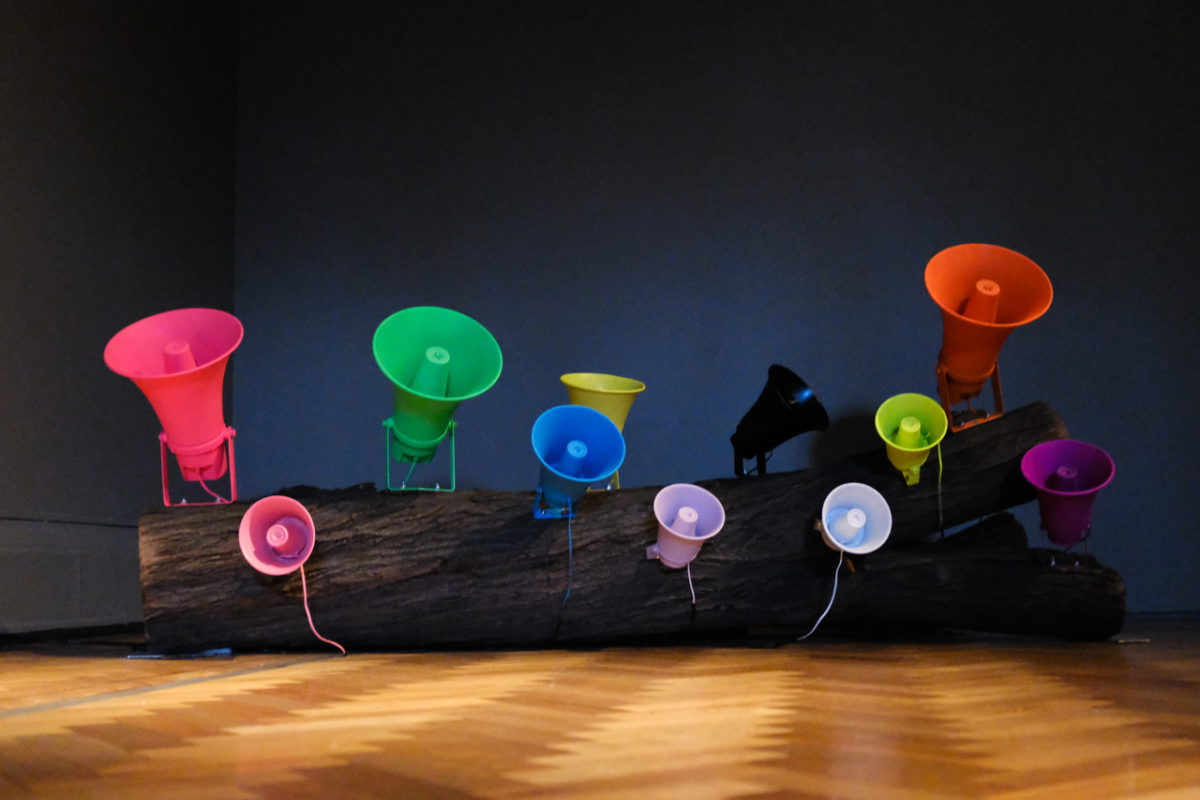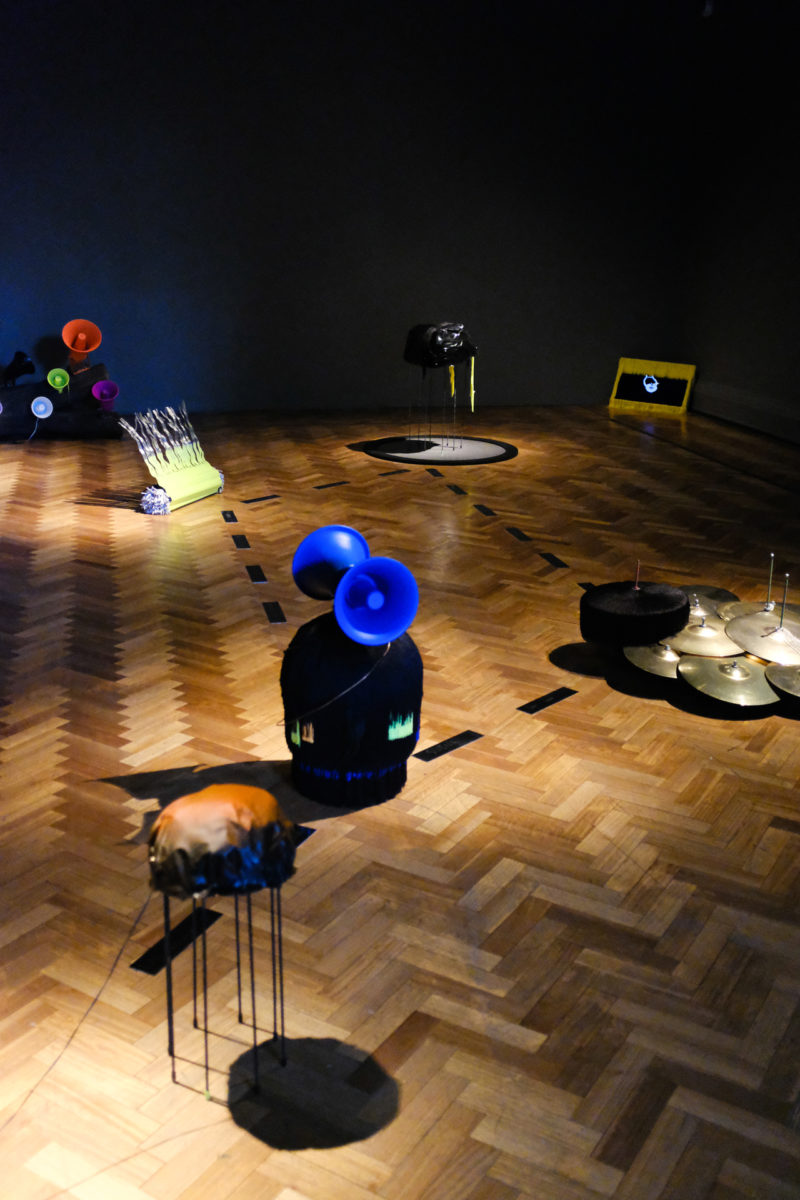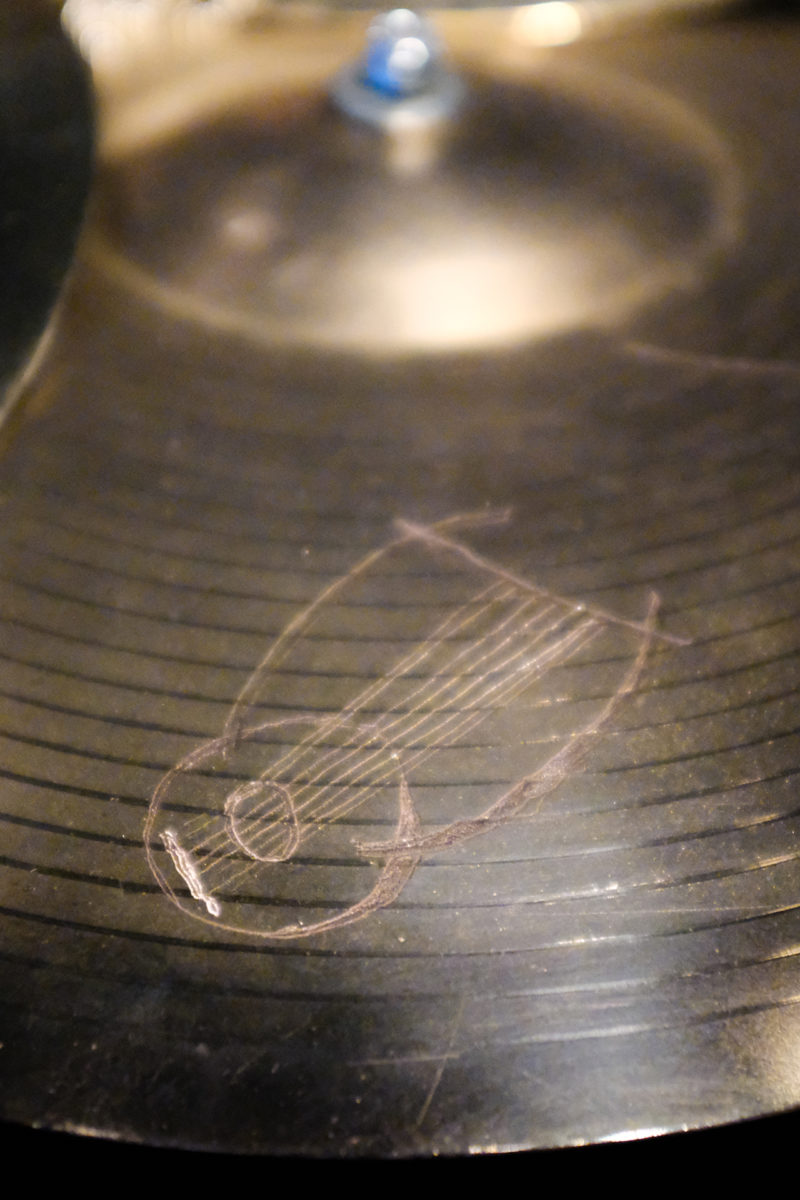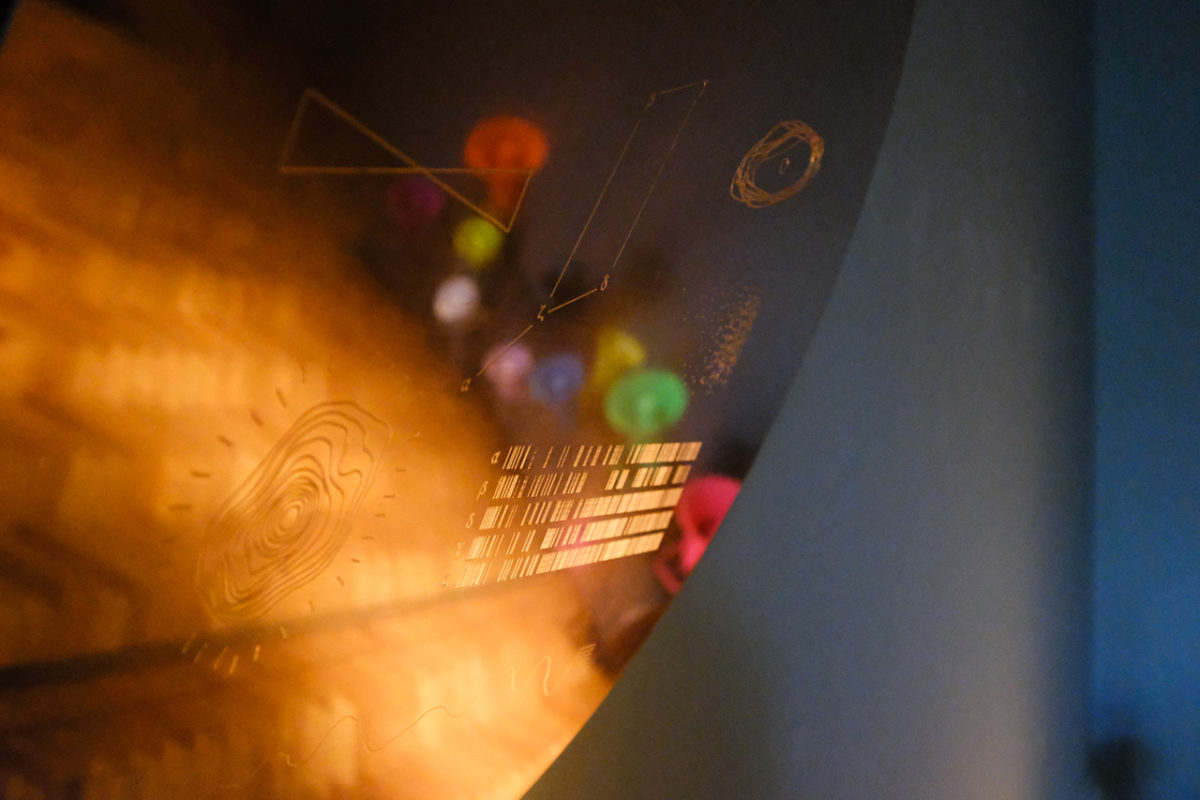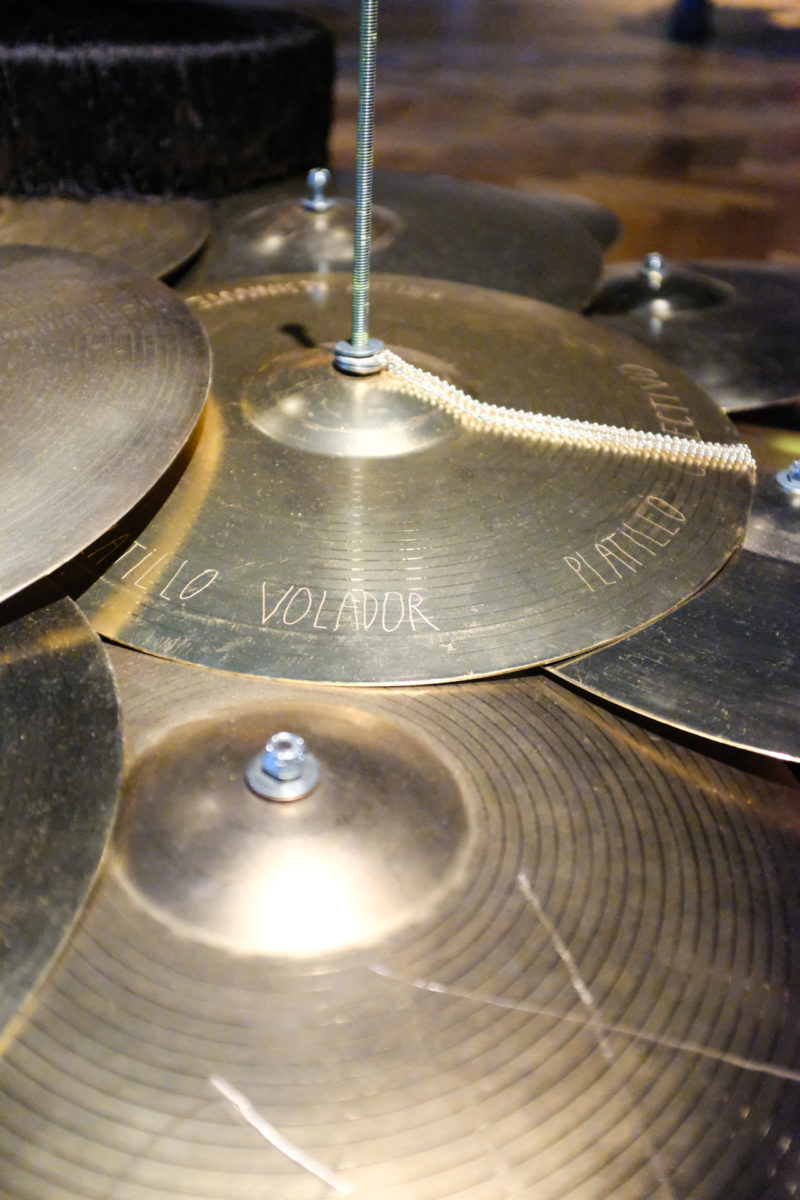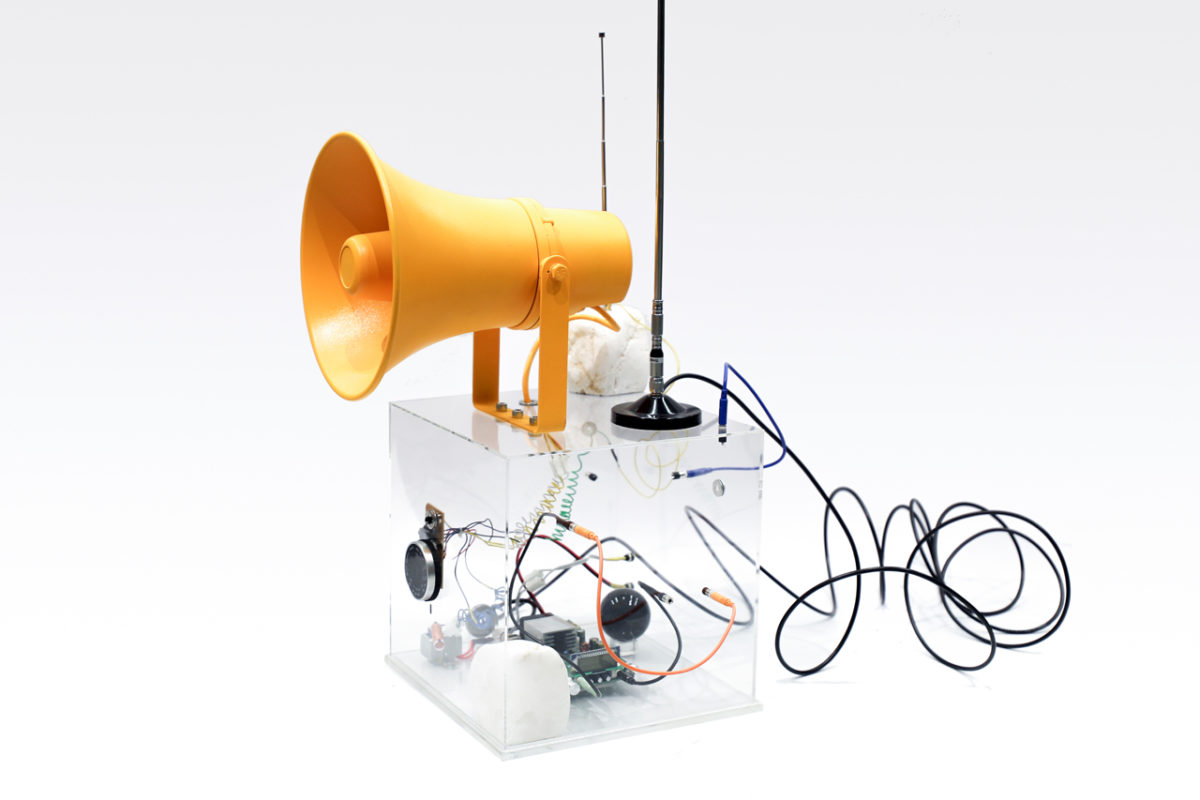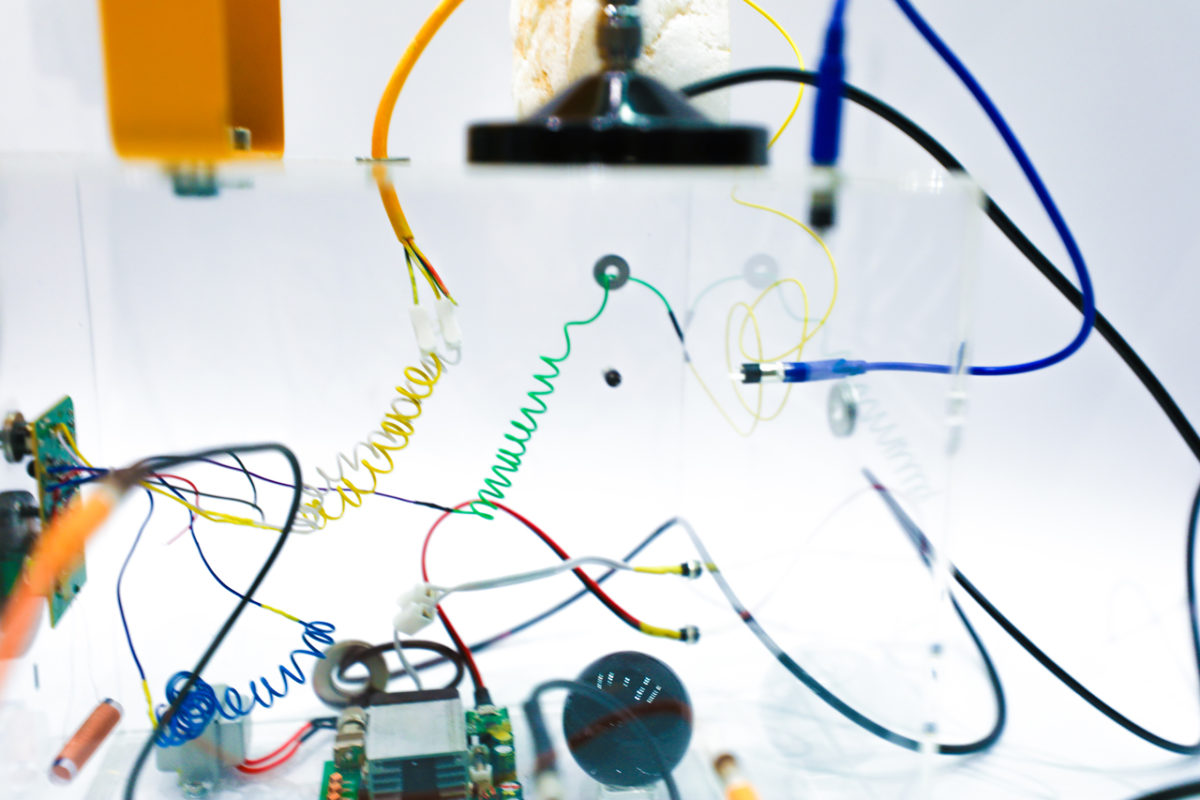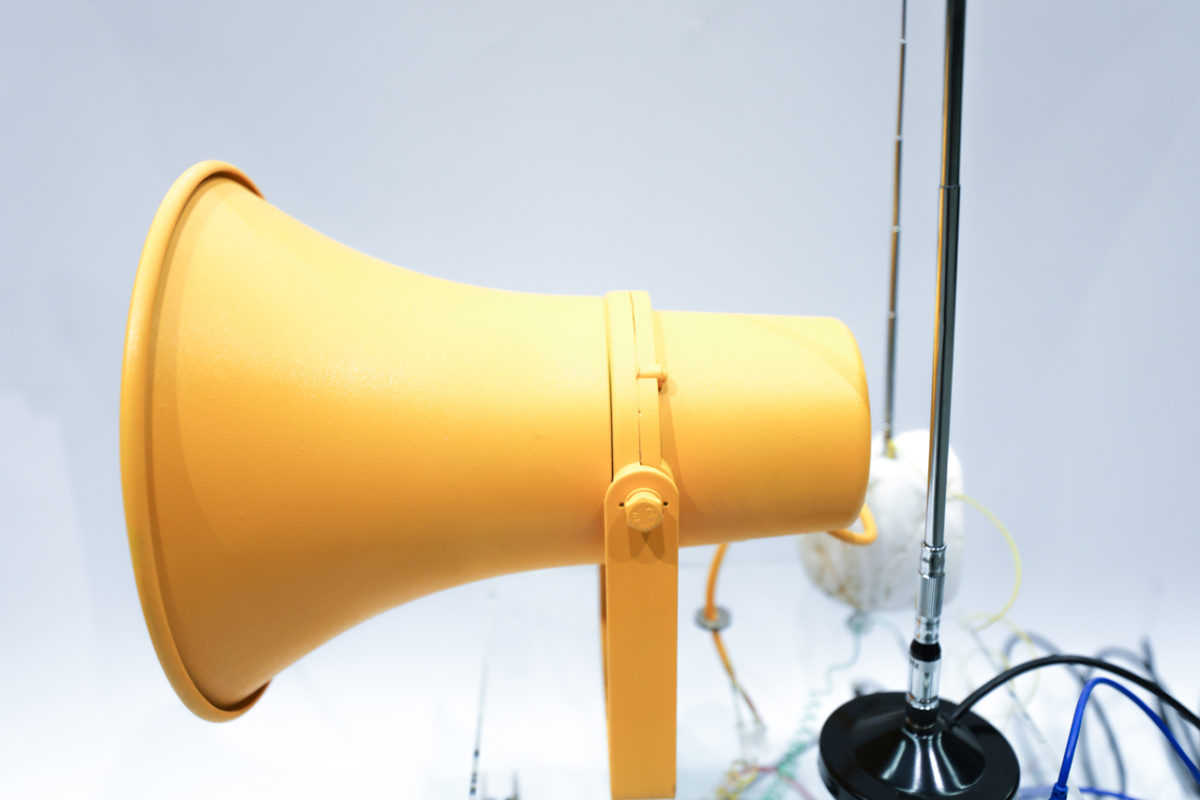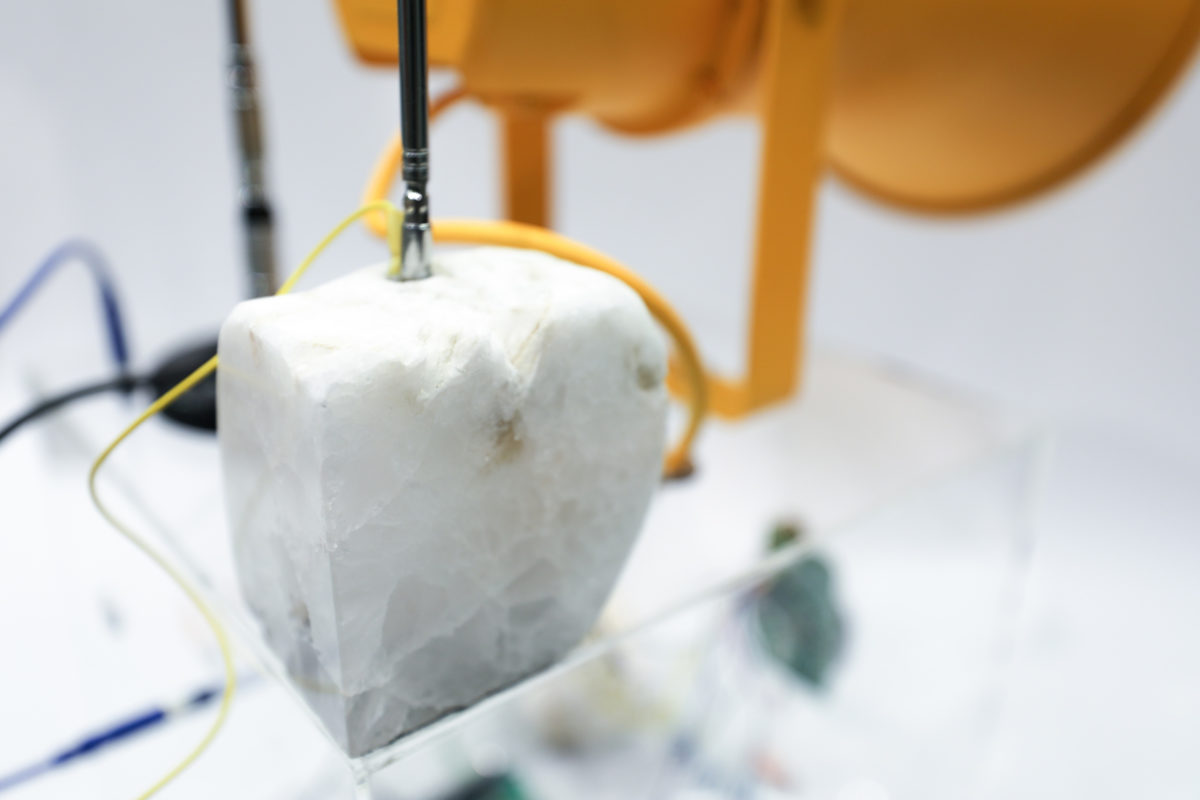← 2020 Schnitzer Prize in the Visual Arts
Nicole L’Huillier
First Place, 2020 Harold and Arlene Schnitzer Prize in the Visual Arts
More about the artist
El Poema de la Fábrica Cósmica (CERN, ALMA, ESO)
Kinetic sonic sculpture. Installed at CERN in the LHC ALICE Detector in Switzerland; the ALMA Observatory OSF, Atacama Desert, Chile; and Paranal Observatory ESO, Atacama Desert, Chile, 2019.
This sonic rite consists of a listening session of the performance of the place, guided by the *PARACANTORA, a sonic device that acts as a medium between worlds. It becomes a parasite of the place and through environmental sensing, real-time mapping, and six speakers, it diffuses the chant of the apparently silent agents around us. It is a transductive device that contains different environmental sensors that are mapped in real-time into different sounds (synthesizers, samples, textures, words, and other voices) that create a musical performance of the place, unveiling the performativity of non-human agents on the environment and their expressive capacities. In places where the natural and technological collide there are particular disturbances that are transduced by this parasitic medium to create a sonic poem that is imprinted in our collective material memory and sensitizes us through the aural. Become a membrane and resonate like a drum. Connect with your quark-gluon-plasma origins. Shake your material existence, and let this parasitic medium guide you through a concert of a specific moment in space and time. This is an exercise of listening to emerge together, stimulate perception, confuse reality, and resonate with the sense that we are as much part of nature as we are part of culture.
This experimental performance took place in different parts of the world where the natural and technological collide, as part of the Simetría Residency (CERN, ALMA and ESO). Recordings and listening sessions were hosted at CERN in the LHC ALICE Detector in Switzerland, the ALMA Observatory OSF, in the Atacama Desert in Chile, and Paranal Observatory, ESO, in the Atacama Desert in Chile.
Sensors in the sculpture: Barometric pressure, altitude, temperature, accelerometer, electromagnetic fields, anemometer, wind turbine, light, proximity, and vibrations.
*PARACANTORA has six independent speakers that diffuse sound on-site, a recording system to document the performance of each place, and works during the performance/recording session with battery, allowing it to be an autonomous traveling sculpture that can visit extreme places.
*PARACANTORA: Parasito Ambiental Ruidoso Amplificador Canalizador de Agentes Ninguneados Transducidos Ofreciendo Rituales Auditivos
The Dancer
Kinetic sonic sculpture. Aluminum, wood, fringe, electronics. 60 x 50 x 45cm. Exhibited in “Spacetime (x, y, z + t),” Emerson Contemporary Media Art Gallery, Boston, MA, 2020.
Robotic sculpture The Dancer (2020) explores the performativity of an object as it moves across space and “draws” through movement in time. The result is an unstable and irregular vibrational dance triggered by sounds emerging from its own body as the resonant frequencies of its material composition causes the object to move.
Thus The Dancer dances as a way of embodying its own noise. This object is animated by sounds that are drawn as a dance across space and time. Exploring other levels of animacy and performativity, this vibrational body exists in a continuous dialogue between gravity, resonance, and trance.
Exhibited in “Spacetime (x, y, z + t),” a multi-dimensional exhibition at the Emerson Contemporary Media Art Gallery featuring experimental works by regional and international artists: Katherine Mitchell DiRico (US), Monika Grzymala (GER), Nicole L’Huillier (CL), Zsuzsanna Szegedi (HUN), and Sarah Trahan (US).
Delira
Installation with kinetic-sonic sculptures, film, and sound composition with the sonification of the constellation of Lyra. Variable dimensions. Exhibited at the 14 Bienal de Artes Mediales, exhibition “El Tercer paisaje,” Museo Nacional de Bellas Artes, Santiago, Chile. 2019.
This work is a resounding party, a sound celebration in which, through a musical composition dedicated to the Lyra constellation, a space of cacophony and vibrations is built. The composition is orchestrated by a quintet of sound artifacts: the Alien Parasitic Orchestra, which makes noise and, at the same time, presents movements triggered by the vibrations of sound, creating a choreographic party of chance, a dynamic rite of repetition and trance.
All the elements of the room are in dialogue with the myth of Orpheus and the Bacchantes, which explains the origin of the constellation. The work seeks to vindicate the image of the Bacchantes and rediscover, through the celebration of nature, the wild, the madness, the alien to compose collective symphonies that give way to a strange beauty. The figure of Orpheus as the classical hero who dominates the lyre, an instrument that embodies the culture of technology, is cut up by the collaborative and transversal voice of Bacchantes, trans-specific beings, savages and worlds of non-rational powers.
In this invocation of the ancient myth, the lyre descends from its heavenly throne and breaks on impact on Earth, giving life to an interstellar choir of a hybrid nature. Those of us here are part of this cosmic choreography, where the limits of things are more porous than our habits allow us to perceive. This installation invites us to listen to emerge together, free ourselves from fear of noise and enter into a collective ritual of vibrations and resonances that celebrate the multiplicity of voices, the various types of beauty, delirium.
Scientific allies: Residencia Simetría (CERN-ESO-ALMA), Museo Chileno de Arte Precolombino.
Collaborators: Corporacion Chilena de Video, Bill Dent, Manuel Alvarado, UNO A MIL, Joaquín González, Daniela Saldaña, Simmone Wall, Juan Necochea, Juan Toledo.
This piece was done thanks to the funding and support of Bank of America Merrill Lynch and Fundación Antenna.
Hybrid Radio
Radio Transceiver Sculpture. Acrylic, electronics, cables, quartz, obsidian. Approximately 50 x 50 x 50cm. Exhibited in A Parasitic Molecular Infrastructure curated by Nomeda and Gediminas Urbonas, Swamp Pavilion (Lithuanian Pavilion), Venice Architecture Biennale 2018.
Hybrid Radio opens a dialogue around the possibilities of re-thinking radio communication as an open tool for transmitting and receiving in order to create streams for civic communication, engagement, and expression.
This piece explores the history of radio, as well as free radio theories around the world, and proposes to re-appropriate the space of the airwaves that has been drastically regulated, privatized and institutionalized. Radio acts as an invisible and mobile architecture, having the characteristic of breaking down boundaries, territories, and walls. Understanding radio as a parasitic system can provide a setting to grow in an organic and molecular way. The objective is to explore the potentials in radio infrastructure, its invisibility and the possible ways of using it to foster expression, and trigger discussions about decentralized communication networks and open streams of coexistence.
About the Artist
Nicole L’Huillier is a transdisciplinary artist from Santiago, Chile, currently based in Boston. Through installations, performances, sculptures, compositions, and multiple transductions, her work explores human and non-human performativity, rituals of membranal and resonant architectures, as well as vibration and sound as construction materials for spaces, identity, and agency. She works at the intersection of music, art, architecture, science, and technology to challenge perceptual conventions and to open the possibility of new imaginaries. Nicole is also part of the MIT Media Lab Space Exploration Initiative, where she explores the experimental forms and implications of art, expression, and culture in outer space. She is also an experimental musician, drummer, synth lover and one-half of the space pop duo Breaking Forms. Nicole is currently a PhD candidate and research assistant at MIT Media Lab, Opera of the Future group, she also holds a Master in Media Arts & Sciences (2017) from MIT Media Lab.
More at Nicole L’Huillier’s website
Back to 2020 Schnitzer Prize in the Visual Arts
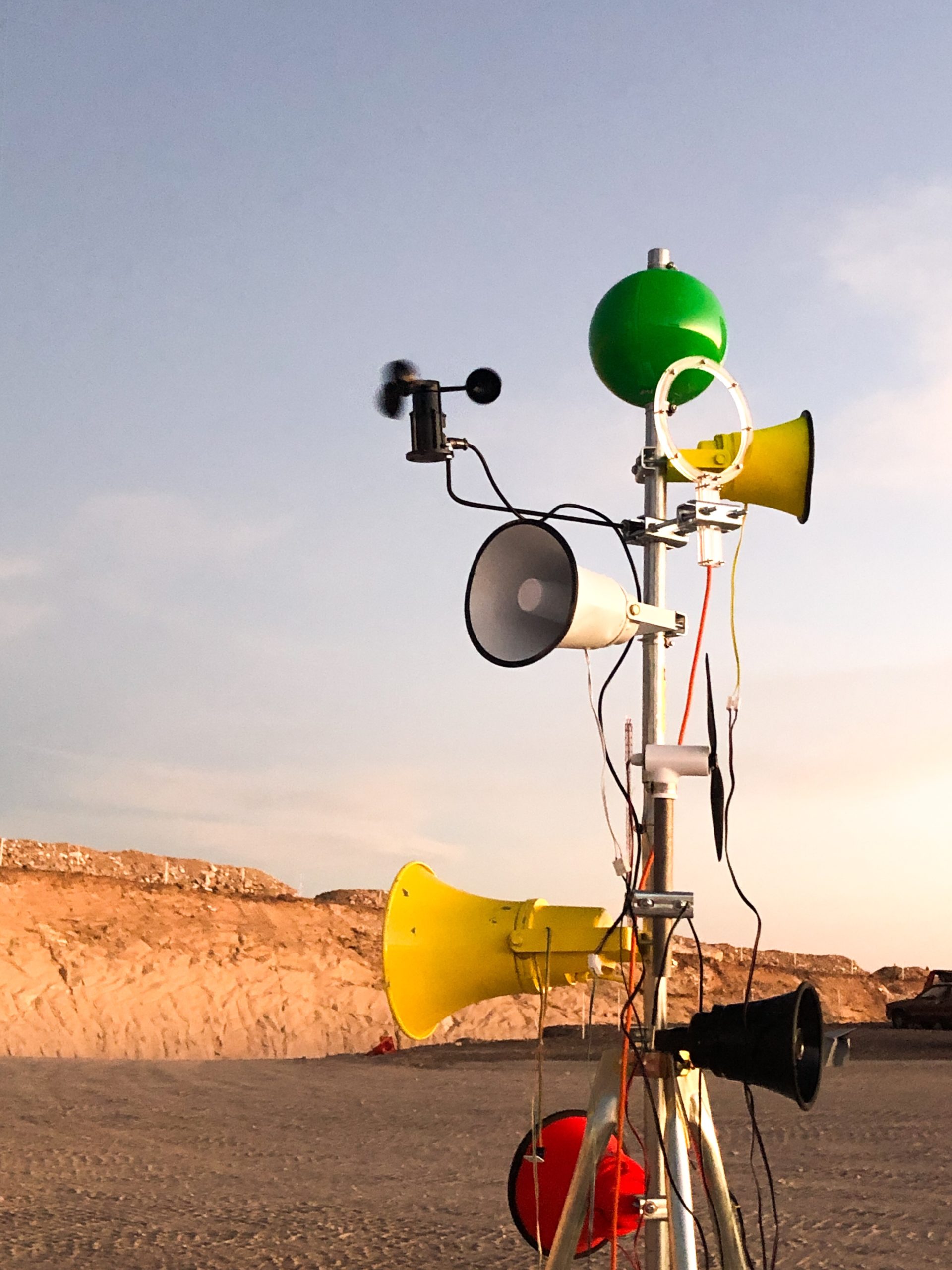
Nicole L’Huillier’s Application Video

